What is Agar Agar?
L'agar agar, also called only agar, is a vegetable gelling substance obtained from the cell walls of about 32 species of red alga belonging to different genera including Gelidiaceae is Gracialarie (Gelidium the best known, Gelidiella, Pterocladia, Sphaerococcus, Tengusa, Ogonori; Figure 1).
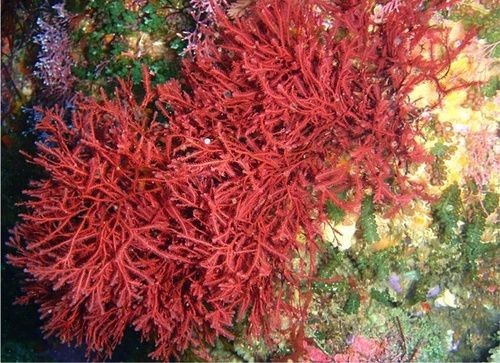
Figure 1: specimen of red algae.
Other names by which this product is known are: Kanten, agaropectin, Java alga, Chinese jelly, Japan glue. The cultivation of algae and the production of agar take place mainly in Japan, the country where it was discovered, Southeast Asia, South America and some Mediterranean countries (mainly Spain).
Since seaweed has a strong and salty taste, it is advisable to treat it to soften its fibers, neutralize its flavor and extract the main components that form the gel, mucilage and carrageenan.
Agar production takes place both through traditional natural and industrial methods. The natural method has been maintained since its discovery and provides for the "sun drying"Or drying in the sun during the day on the beach and the subsequent" snow chilling ", cooling on the snow in the mountains at night. After this cycle of daytime melting and night freezing, the algae are cooked in a little vinegar, to whiten them and reduce their strong flavor.
This process can last for months and when the algae fibers have softened, the compound is pressed and filtered to obtain a homogeneous liquid which, in turn, is placed in large trays where the agar congeals, forming a jelly.
The jelly is then cut into strips or bars, placed outdoors on bamboo frames and once again in the sun and low temperatures to dehydrate it. The final bars are very light, dry, discolored and opalescent (between light gray and pale yellow).
At this point they are ready to be packaged and sold or reduced to flakes or powder. The latter format is mainly obtained industrially and is the most widespread. To obtain the powdered agar, the algae are treated with sulfuric acid and bleached to neutralize the color and flavor and extract the starches.
Employments
Being a gelatin of vegetable origin, colorless, odorless and tasteless, the agar it is suitable for most diets, perfectly replacing gelling agents of animal origin such as gelatine but also to eggs in the dough.
It is mainly used in the preparation of desserts such as jams, jams, puddings, creams and fillings, marshmallows and gummy candies, meringues, ice cream and yogurt, sorbets, but also savory preparations for spreadable vegetable cheeses, sauces, soups and aspic (sweet or savory products , typically summer, based on the incorporation of different jelly foods).
It is also added in the brewing as a clarifying agent.
In order to use the agar in the kitchen it is necessary to boil it to dissolve it and the gelation takes place at temperatures between 25 and 35 ° C, making it easier to use than animal gelatin which gels around 5 ° C. Unlike pectin, which is also vegetable, agar does not need sugar to gel.
On food products sold in the European Union, agar is found on the label as an additive E406. Isinglass is a gelatin consisting of a protein mixture initially extracted from the swim bladder of some fish (in particular sturgeons) while today it is mostly composed of bone and rind scraps of bovine and pork (with or without derivatives of fish and poultry) of intensively reared animals.
Agar, on the other hand, does not have proteins but fibers and it is therefore possible to use it in preparations with pineapple, fresh figs, peaches, papaya, mango, spinach and chocolate that contain proteolytic enzymes (ie that break down proteins).
Other uses
Even bacteria and fungi have many enzymes and this peculiarity of the agar has allowed its use in microbiology to solidify the culture media for the study of microorganisms and drugs to fight them (Figure 2).
The culture media are generally poured onto a special plastic tray known as a Petri dish. In fact, the agar was introduced in Europe in 1859 by the French chemist Anselme Payen who presented it to the Academy of Sciences in Paris, and was then used in 1882 as a bacterial culture medium by Robert Koch for his studies on tuberculosis, on suggestion of his wife Angelina.
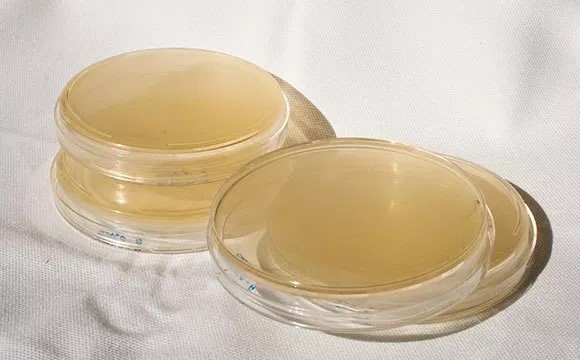
Figure 2: Petri dishes with agar-based media for the study of bacterial strains.
Agar-based culture media are also used for the reproduction of some types of orchid. Other non-food uses of agar include: the production of cosmetics, the preparation of salt bridges for electric cells and, in the past, pastes for prosthetic dentistry impressions, now replaced by silicones and polyethers.
Finally, it can be mixed with special resins to create adhesives, as a starch to starch paper and silk and in the preparation of emulsions for photographs.
The discovery of Agar Agar, between chance and folklore
The Japanese name of the agar is "Kanten" what does it mean cold weather (or sky) with reference to the neutrality of taste, smell and color. According to a Japanese folk legend, agar agar was discovered in 1658 by an innkeeper named Minoya Tarazaemon.
The Emperor, along with his royal entourage, got lost in the mountains during a snowstorm and arrived at the Minoya Inn. During dinner, the innkeeper decided to prepare a soup based on red algae for his guests. Perhaps Minoya cooked too much of it or its flavor was too intense and salty, that the leftover dinner was thrown out, where the cold and snow froze it.
The morning sun melted and dried this soup, leaving only a translucent white residue. Minoya picked it up and decided to boil it; to his immense surprise, once cooled he obtained a gelatin and hence the discovery of the agar and the method to produce it.
In Japanese cuisine, agar agar is used for the preparation of desserts mitsumame is mizuyokan (Figure 3 is Figure 4), jellies made from beans (especially azuki), fruit, sugar, water and agar to be enjoyed during the tea ceremony.
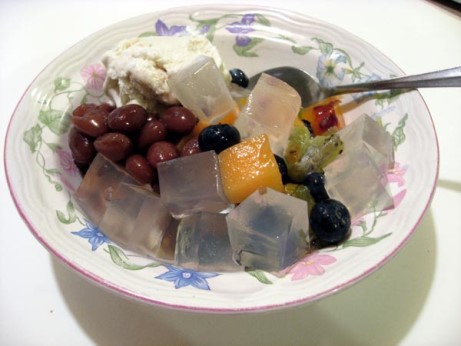
Figure 3: Use of agar in Japanese cooking (Mitsumame)
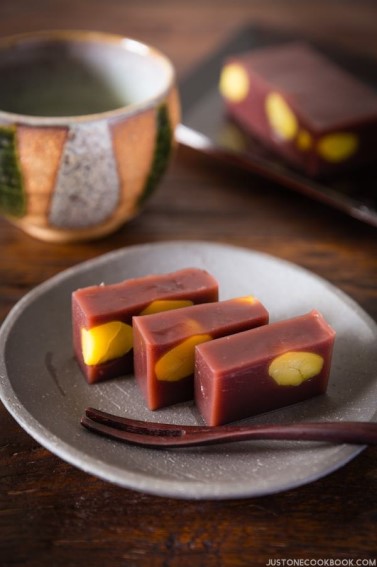
Figure 4: Use of Agar in Japanese Cuisine (Mizuyokan)
The chemistry of Agar Agar
As already mentioned in the introduction, in its natural state agar is found inside the cell walls of red algae in the form of a mixture of calcium and magnesium salts.
The amount of agar in algae is variable and depends on the conditions of the sea water including: temperature, intensity of the sun's rays that strike the algae and concentration of carbon dioxide (CO2).
Chemically, the structure of the agar agar (Figure 5) is a complex mixture of polysaccharides, or chemical compounds belonging to the class of carbohydrates (or carbohydrates). These polysaccharides are mainly made up of polymer fractions agarose (consisting of repeating units of D-galactose and 3.6-anhydro-L-galactose) linked alternatively with gelling glycosidic bonds to theagaropectin (same structure as agarose but has bound the non-gelling D-glucuronic and pyruvic groups).
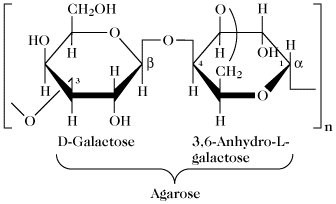
Figure 5: chemical structure of the agar agar. The “n” in the square brackets indicates the number of repeating units of polymers that create the gel lattice.
Agar agar does not dissolve in cold water but is hygroscopic, meaning it can absorb a lot of water, up to 20 times its weight (especially powdered preparations); to dissolve it it is necessary to bring the water to a temperature of 95-100 ° C as, as it does not contain proteins, it resists high temperatures.
When the temperature reaches 25-30 ° C, the polymers that make up the agar bind together in a lattice, trapping the water and forming a thermoreversible gel, that is, it is possible to dissolve it again by bringing the water to a boil and subsequently cooling it; therefore, if you have forgotten an ingredient or have little agar, you can save your recipe easily.
The reversible gelling capacity is given by agarose; starch and pectin do not have this characteristic. Agar gels and low concentrations, typically between 0.2 and 2% with respect to water. A teaspoon of powdered agar agar (about 2-4 grams) corresponds to about 6 sheets of gelatin or isinglass. Agar must be dosed very well as it creates a less elastic structure than gelatin.
Nutritional values of Agar Agar
The nutritional qualities of agar depend on the characteristics of the algae from which it is extracted and, in the final product, on the preparation methods and the degree of purity. In general, agar is a low calorie product. In fact, 100 grams provide only 26 calories.
Considering that very little is needed for the preparation of recipes and that, being made up mainly of fibers, it tends to overcome the intestinal barrier unaltered, its real caloric intake is negligible. In 100 grams of product there are about 7 grams of carbohydrates and only 0.5 grams of protein.
On the other hand, fats are almost completely absent. Particularly high is the quantity of mineral salts such as sodium (Na), potassium (K), calcium (Ca), magnesium (Mg), manganese (Mn), iron (Fe), selenium (Se) and forsphorus (P). It also contains vitamins such as those of groups A, B, C, E and K. Finally, like all products derived from the sea and algae, the agar is particularly rich in iodine (I), essential for thyroid hormones, while it is instead gluten-free making it suitable also for celiacs.
Being a completely natural product, it is suitable for all ages and also for pregnant women and being a plant product it is ideal for all types of diets, not only vegetarian and vegan, and consumable by all religions as it is not subject to restrictions such as animal gelatin.
Benefits
The FAO / WHO (Food and Agriculture Organization of USA / World Health Organization) joint committee in its report on food additives and taking into account the results of toxicological studies, did not consider it necessary to set limits on the Assimilable Daily Dose (DGA or ADI, Accetable Daily Intake), considering it safe to use agar agar. Health Benefits:
- Weight loss and blood sugar control: in Japan for almost 400 years the consumption of agar has been used as a natural remedy for weight loss and is known as the “Kanten diet”. It involves dissolving a teaspoon of powdered agar in tea or hot water and consuming it before meals. Thanks to the high fiber content and the ability to absorb water by increasing the mass of the compound consumed, there is an immediate feeling of satiety and reduced food intake during meals. The fibers in fact slow down gastric emptying and pass slowly through the intestine. By absorbing water, agar also absorbs excess glucose by eliminating it through the stool and contributing to the control of blood sugar and fat accumulation, of particular importance in diabetes and obesity.
- Intestinal health: the regularity and cleanliness of the digestive system is essential for the general health of an individual as the intestine is considered the second immune system. The transit of the fibers also allows the absorption and elimination of toxins from the gastrointestinal tract. Agar is often used as a remedy for constipation. An increasing number of studies have shown that fiber intake through agar products also has a protective effect against other ailments such as gastroesophageal reflux symptoms, hemorrhoids and intestinal ulcers.
- Strong bones: problems such as osteopenia (lower bone mineral density) and osteoporosis (reduced bone mass and reduction of bone microarchitecture) become more and more frequent with aging, lowering height and increasing the risk of fractures. Agar is rich in calcium, which gives strength to tissues, bones and teeth; and it is also rich in magnesium and manganese essential for maintaining correct bone density and for bone formation. To have strong and healthy bones you need a right balance of these minerals, which fortunately the agar has. In fact, a problem encountered in Western diets is a higher calcium intake compared to magnesium and manganese which can cause painful calcifications of the joints and susceptibility to kidney stones.
- Contribution in the prevention of anemiaAnemia occurs when the body does not make enough red blood cells, with symptoms such as fatigue, dizziness and shortness of breath. The causes of anemia (as well as the types of anemia) are many and range from blood loss following internal or external bleeding, chronic diseases but also from a lack of nutrients such as iron, necessary for the synthesis of hemoglobin. Iron deficiency (iron deficiency) anemia is the most common type of anemia. Taking about 30 grams of agar for example provides 33% of the iron needed per day and which helps produce healthy red blood cells. 30 grams of agar are difficult to consume as you need very little of it in the kitchen; in any case, it is always advisable to take food and / or together supplements rich in vitamin C to increase iron absorption.
- Brain health: As can be seen from the chemical structure, agar is made up of repeated units of galactose, a simple sugar also known as "brain sugar". Galactose is important for brain development and the proper functioning of brain cells in infants and children. When properly synthesized by the body, galactose participates in the formation of glycolipids and glycoproteins in different tissues: for example, it is an important component of the myelin sheath that surrounds and protects neurons and contributes to the conduction of nerve impulses. According to a recent scientific study, in neurodegenerative diseases, galactose intervenes in the removal of neurotoxic compounds from the brains of Alzheimer's patients, slowing down cognitive decline. The intake of agar therefore helps to provide galactose to children and the elderly.
- Vitamin supply to maintain good eyesight and strengthen the immune system: The vitamins E and A are precious for the proper functioning of the eyes and, together with vitamin C, stimulate the immune system and act as antioxidants.
Side effects and contraindications
Agar agar is a product that is considered safe for most people. Only in a few cases were mild side effects such as diarrhea, cramps and flatulence, mostly related to the quantity of fibers found.
Although very rare, there are some individuals who are allergic to agar agar and red algae and may exhibit the typical symptoms of a food allergy: itching, swelling or nausea soon after eating a food containing agar. In general, for those with problems such as dysphagia (difficulty in swallowing) and intestinal obstruction, medical advice is recommended and, possibly, the intake of plenty of water while consuming agar-based preparations.
It is not recommended to take agar concomitantly with drugs as the fibers could decrease or slow down the absorption of the active ingredients. Finally, for those suffering from hyperthyroidism it is a good idea to limit the consumption of agar which, containing iodine, could excessively stimulate the thyroid gland.
Where to buy
Agar agar is mainly sold in three different formats: filaments, flakes (or bars) and powder (Figure 6).
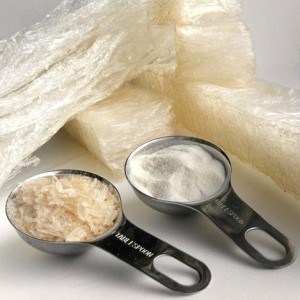
Figure 6: main agar formats: threads (left), flakes and bars (measuring cup bottom left and top right respectively) and powder (musurino bottom right).
The gelled format is difficult to find and generally more widespread in South East Asian countries. The threads and flakes are the most natural formats but less gelling as they require greater doses in culinary preparations, compared to powder.
It is possible to buy agar in large-scale distribution, in organic food stores, in some herbalist's shops and in ethnic shops, especially of oriental origin.
It is also possible to buy it online from different manufacturers, according to various needs, with a cost that is around € 100 / Kg. It is typically sold in bags, pouches or jars of 25 to 60 grams.
Being a product that absorbs water, it is best to keep it in a dry place and away from light; after each use, always close the container well to avoid a loss of gelling capacity. For larger formats, it is possible at our site buy agar agar powder.
Where to buy Agar Agar
You can buy Agar Agar at the best price here 👉 https://www.biolineintegratori.com/agar-agar/
What is it for?
L'agar agar, also called agar alone, is a colorless, odorless and tasteless vegetable gelling substance. It is suitable for most diets and is mainly used in the preparation of sweets and savory preparations for spreadable vegetable cheeses, sauces and soups.
You can buy Agar Agar at the best price here 👉 https://www.biolineintegratori.com/agar-agar/
What are the benefits?
It is used as a natural remedy for weight loss, for intestinal and brain health, and as a prevention for anemia.
You can buy Agar Agar at the best price here 👉 https://www.biolineintegratori.com/agar-agar/

